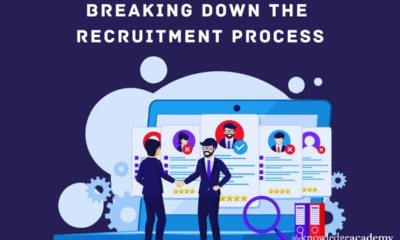Tech
Sardonyx Technologies: A Deep Dive into Its Innovations and Challenges

Introduction
The rapid evolution of technology has paved the way for dynamic players in the innovation landscape. Among them, Sardonyx Technologies stands out as a name synonymous with ambition and progress. But does this company truly deliver on its promise to redefine innovation, or is it falling short of expectations? This article dives deep into Sardonyx’s journey, exploring its achievements, challenges, and the factors shaping its trajectory. Whether you’re a tech enthusiast, investor, or industry professional, understanding Sardonyx Technologies’ impact could provide valuable insights into the future of technological innovation.
Table of Contents
What is Sardonyx Technologies?
Founded with a vision to bridge the gap between creativity and functionality, Sardonyx Technologies operates across diverse sectors such as artificial intelligence, software development, and IoT. The company prides itself on delivering cutting-edge solutions designed to solve real-world problems. However, critics argue that some of its offerings lack scalability and robustness.
Key Offerings
- AI-Powered Platforms
Sardonyx boasts advanced AI-driven platforms for industries like healthcare and finance. For instance, their AI diagnostic tool promises to reduce errors in medical imaging by 30%, offering groundbreaking potential. - Custom Software Development
By focusing on tailor-made software, Sardonyx targets businesses seeking personalized solutions. Their flagship product, SardoSuite, integrates seamlessly with existing infrastructures, saving time and reducing operational costs. - IoT Innovations
Their IoT-enabled devices cater to smart home enthusiasts and enterprise-level applications. Sardonyx’s energy management systems reportedly cut consumption by 20%, aligning with sustainability goals.
Sardonyx Technologies’ Strengths
1. Commitment to Innovation
Sardonyx Technologies consistently invests in research and development (R&D). According to a 2023 report by TechWatch, the company allocated 25% of its annual revenue to R&D—far above the industry average of 15%. This commitment fuels groundbreaking projects and attracts top talent.
2. Collaborations with Industry Leaders
Partnerships are a core strength. Collaborating with companies like IBM and Nvidia, Sardonyx gains access to premium resources and expertise. These alliances enhance the scalability of their projects while boosting credibility.
3. User-Centric Approach
Their product design philosophy revolves around user experience (UX). Sardonyx frequently conducts beta testing and integrates customer feedback into its development cycle. This strategy ensures their products meet market demands effectively.
Challenges Sardonyx Technologies Faces
1. Scalability Issues
Despite innovative products, critics argue that Sardonyx struggles with scaling solutions for large enterprises. For instance, some clients report difficulties in integrating their AI systems into legacy infrastructures.
2. Competitive Landscape
Sardonyx operates in a fiercely competitive space dominated by tech giants such as Google and Microsoft. Competing with these behemoths often means smaller firms face challenges in market share and customer retention.
3. Customer Support Concerns
While innovation is their hallmark, customer service isn’t. Online reviews frequently highlight delays in resolving issues, which could harm long-term client relationships.
Real-World Case Study: A Mixed Bag of Success
In 2022, Sardonyx partnered with a mid-sized healthcare provider to implement their AI diagnostic tool. Within six months, the hospital reported a 25% reduction in diagnostic errors, saving lives and enhancing efficiency.
However, the same project encountered challenges when expanding to other branches. Issues related to compatibility with older systems caused delays, underscoring scalability concerns.
Future Prospects for Sardonyx Technologies
The future of Sardonyx Technologies hinges on addressing its current limitations while capitalizing on its strengths. Key strategies include:
- Enhancing Scalability: Focus on developing universally adaptable solutions.
- Improving Customer Support: Streamlining response systems to boost client satisfaction.
- Expanding Partnerships: Collaborating with startups and universities to foster innovation.
FAQ
Q: What industries does Sardonyx Technologies serve?
A: Sardonyx Technologies serves industries including healthcare, finance, manufacturing, and consumer technology.
Q: Is Sardonyx Technologies a global company?
A: Yes, it operates globally, with offices in North America, Europe, and Asia.
Q: What makes Sardonyx unique?
A: Their commitment to innovation, user-centric design, and collaborations with leading tech companies distinguish them.
Conclusion
Sardonyx Technologies exemplifies the promise and challenges of the tech industry. With its innovative solutions and bold ambitions, the company has made significant strides in transforming industries. However, addressing scalability and customer service concerns remains critical to sustaining long-term growth. For businesses and individuals, Sardonyx represents an exciting—albeit imperfect—player in the technological frontier.
Tech
Parimatch’s Take on India’s Gaming Future: The Battle Between Regulation and Prohibition

The global gaming industry maintains intense focus on India’s market developments and policy discussions surrounding betting and digital gaming platforms, with Parimatch among the key international companies recognizing India as a significant strategic opportunity. At the same time, leading operators including Parimatch advocate that sustainable investment frameworks and tax compliance require clear and realistic regulatory guidelines. This makes the policy direction selection absolutely critical: total market prohibition versus structured, rigorous regulation that maintains industry operations within established legal frameworks.
Table of Contents
The Legislative Foundation
India’s parliament enacted the Online Gaming Promotion and Regulation Act, establishing comprehensive prohibitions on real money gaming (RMG) digital operations, including marketing activities and related financial processes. Legislative supporters emphasize “substantial financial and psychological risk exposure” necessitating “comprehensive regulatory measures” to tackle social challenges. Legal infractions result in imprisonment terms extending to three years alongside significant monetary penalties.
Market Response: Service Closures and Industry Transformation
The legislative decision generated immediate industry reactions as major operators began terminating real money gaming services and establishing deposit restrictions. Dream Sports, controlling Dream11, Dream Picks, and Dream Play platforms, considered complete operational division closure following law implementation during internal strategic assessments. Mobile Premier League (MPL) halted premium gaming offerings and deposit operations while initiating customer refund procedures. Gaming companies Zupee, Probo, and Gameskraft terminated RMG operations completely. Moreover, Times Internet announced Cricbuzz11 project discontinuation.
Throughout this transition, industry organizations and operators assessed potential Supreme Court appeal possibilities while recognizing considerable legal challenges. Meanwhile, hundreds of industry professionals started public job searches through social media channels, expecting significant workforce reductions in upcoming weeks.
The federal GST council simultaneously introduced 28% digital gaming taxation (increased from previous 18% commission-only charges). This revised framework taxes both operational commissions and direct wagering amounts. Users face substantially higher participation costs while operators predict widespread business model failures. Large enterprises might successfully adapt to these changes, whereas medium and smaller operators approach “financial viability limits.” Industry analysts stress that transparent regulatory systems, instead of prohibition coupled with excessive taxation, preserve legal industry engagement and create sustainable growth environments.
Legal Framework Complexities: “Skill vs. Chance” Classifications
Indian judicial tradition has historically categorized skill-based and chance-dependent gaming differently. Fantasy cricket platforms, rummy, and poker exploited this distinction, achieving favorable court rulings as “skill-focused” activities. Current legislation and tax changes eliminate these categories, implementing consistent stricter requirements across previously “skill-classified” offerings. Fantasy sports, serving as a primary mobile gaming driver in India, therefore faces potential revenue stream elimination.
Sports wagering remains officially prohibited nationwide (excluding traditional horse racing exceptions). Practically, this created extensive underground markets, especially cricket-focused, with estimated shadow economy volumes reaching tens of billions across millions of participants. Complete RMG prohibition will likely redirect consumer demand toward unregulated environments lacking oversight systems, responsible gaming protocols, or tax contributions.
For international operators evaluating India’s market possibilities, core issues transcend “skill versus chance” discussions toward establishing legal frameworks that separate legitimate operations from underground activities. Industry consensus suggests only comprehensive regulation and licensing mechanisms can balance consumer protection with revenue generation while promoting sustained industry investment.
Self-Governance Systems: Exploring Regulatory Alternatives
2023 regulations introduced self-regulated organization (SRB) frameworks intended to validate “approved” RMG services and establish transparent operational standards (including algorithmic fairness requirements). However, essential implementation elements (procedural guidelines, decision-making protocols, enforcement measures) never reached operational status, with several technical specifications eliminated during final approval processes. Without clearly established SRB structures, industry participants face operational uncertainty while government entities lack effective regulatory instruments.
Prohibition advocates emphasize addictive design characteristics, youth exposure concerns, and social consequences (financial burdens, family disruption, criminal involvement). International research demonstrates that access limitations without comprehensive support mechanisms (educational programs, risk awareness initiatives, age verification, spending/time restrictions, assistance resources) produce limited long-term success. Younger participants develop circumvention methods, and problems relocate rather than resolve.
Industry correspondence to government officials estimated Indian RMG company valuations at approximately ₹2 trillion (~$23 billion), generating ₹310 billion (~$3.6 billion) revenues while providing ₹200 billion (~$2.29 billion) annual tax contributions. Markets previously demonstrated 28% compound annual growth with projections suggesting potential 2028 market doubling. Rapid prohibition implementation challenges employment stability, innovation capacity, and tax revenue foundations while maintaining illegal demand networks.
Regarding proposed regulatory modifications, experts emphasize legal framework quality and intellectual property protection importance. International operators experience brand counterfeiting within Indian markets, damaging consumer trust and preventing legitimate service development and partnership formation. Companies stress that without conditions ensuring competitive equality for international enterprises, major investments remain problematic.
India’s Counterfeit Gaming Network: Beyond Brand Duplication
Legal sector development encounters significant obstacles from widespread counterfeit gambling brand proliferation. Indian fraudulent operators systematically create replica websites and mobile applications imitating recognized international brands including major gaming platforms and established operators. These deceptive sites replicate corporate branding and operational features, misleading consumers. CUTS International research indicates illegal platforms including counterfeit versions targeting users of legitimate brands accumulated over 5.4 billion visits during fiscal 2025. This traffic exceeds major digital platforms, illustrating the challenge’s magnitude.
Counterfeiting approaches employ various methodologies. Pre-built “clone-script” technologies enable rapid site deployment resembling established operators within days. Unauthorized mobile applications distributed through unofficial channels perfectly replicate legitimate platform designs. Telegram channels and automated systems receive extensive use major operators regularly warn users about fraudulent Telegram bots collecting funds through deceptive “promotional schemes.”
Government responses include police raids, domain blocking, and server seizures by state cyber divisions, though effectiveness remains constrained. Offshore jurisdiction use, anonymous registrations, and cryptocurrency transactions complicate prosecution efforts and extend legal processes. Brands consequently suffer reputation damage while consumers remain vulnerable to fraudulent schemes. Studies show illegal sites specifically target younger users and financially vulnerable groups, promoting “instant wagering” and unrealistic payout promises.
In this context, established international operators stress that counterfeit prevention must integrate with regulatory policy development. Otherwise, prohibition measures or tax increases will fuel shadow market growth, already showing rapid expansion.
Parimatch’s Market Vision: Regulation as the Strategic Blueprint
Complete RMG prohibition combined with 28% goods and services taxation severely limits legitimate market operations. Consumer demand persists but shifts toward unregulated and high-risk environments.
Comprehensive regulatory frameworks represent the optimal strategy for market development. This encompasses unified federal standards, operational self-regulated organizations (SRBs) with established procedures and algorithmic oversight, age and behavioral restriction implementation, payment transparency requirements, responsible gaming mechanism development, and robust intellectual property and brand protection systems.
For India, this approach maintains employment opportunities, tax revenue generation, and innovation advancement. For established international operators like Parimatch, structured regulation provides operational predictability and market confidence. Such regulatory architecture would effectively create market access for proven operators like Parimatch, enabling significant contributions to India’s digital gaming ecosystem through legal, transparent, and responsible platform development that benefits consumers while supporting the nation’s economic growth ambitions
Tech
The Sustainability Revolution in Data Science: Green AI and Beyond

How Environmental Responsibility Is Reshaping the Data Industry
As the global push for sustainability accelerates, the data science industry is facing a new challenge: how to innovate responsibly. Large-scale data processing, especially in machine learning and AI, can be energy-intensive, consuming vast amounts of electricity for computation and cooling. This reality has influenced how future professionals are trained, with a modern data science course increasingly including lessons on environmental impact and responsible innovation.
In parallel, organizations are recognizing that a data science online course designed around sustainability is not just a learning pathway but a reflection of how the industry itself is evolving. In 2025, companies are under increasing pressure to reduce the environmental footprint of their digital operations giving rise to the movement known as Green AI.
Table of Contents
Green AI is about building and deploying AI systems with minimal environmental impact. This involves optimizing algorithms for efficiency, choosing energy-efficient hardware, and using renewable-powered data centers. While the shift is partly driven by regulatory changes, it’s also a reflection of growing consumer demand for sustainable practices. Increasingly, businesses are judged not just by the accuracy of their algorithms or the speed of their analytics, but by how responsibly they manage the environmental cost of innovation.
Why Sustainability Matters in Data Science
A single large AI training run can consume more energy than several households use in a year. For companies building AI models at scale, these numbers are not only environmentally concerning but also financially significant. Energy bills can skyrocket, cooling demands can strain infrastructure, and carbon emissions from non-renewable energy sources can harm corporate reputations. By adopting greener practices, organizations can reduce operational costs while also demonstrating environmental responsibility.
The push for green data practices has also influenced hiring. Companies are now seeking professionals who understand both data science and environmental considerations—individuals who can design algorithms that balance accuracy with efficiency. This has led to the emergence of hybrid skill sets that blend technical expertise with sustainability knowledge. For instance, a data scientist who can cut model training time in half without compromising performance is delivering both business and environmental value.
This shift signals a broader truth: sustainability is not just a corporate buzzword anymore. It is directly shaping job roles, influencing investment decisions, and even becoming a competitive differentiator. In industries such as finance, healthcare, and manufacturing, clients and partners increasingly prefer working with firms that can demonstrate responsible data practices. This is reshaping the professional identity of the modern data scientist into one who is not only technically competent but also environmentally conscious.
The Costs of Ignoring Environmental Impact
Failing to account for sustainability can have long-term consequences. Regulators around the world are introducing stricter climate-related disclosures, and companies that ignore environmental metrics risk penalties, loss of investor confidence, and reputational damage. In Europe, for example, data centers are already subject to efficiency reporting requirements, and similar measures are expected globally.
There is also a human element at play. Employees—particularly younger professionals—are increasingly drawn to organizations that reflect their values. A company that disregards environmental responsibility may find it harder to attract and retain top talent. As data science continues to grow in visibility and influence, its environmental footprint becomes part of the broader conversation around corporate social responsibility.
Moreover, consumers themselves are becoming more informed. Public awareness of the carbon cost of streaming, gaming, and cloud services has already led to pressure on technology providers. It is only a matter of time before the same scrutiny applies to the world of AI and data science. The question will not just be what can your model do? but also what did it cost the planet to create it?
Also, explore Ganesh Institute of Engineering and Technology Review
Green AI in Practice
The concept of Green AI is not limited to lofty ideals—it is being implemented in concrete ways. Researchers are focusing on algorithmic efficiency, reducing the number of parameters without sacrificing accuracy. Hardware companies are innovating chips that require less power to process vast amounts of data. Cloud providers are investing heavily in renewable energy, with some pledging to achieve carbon neutrality within this decade.
On the ground, this means data teams are rethinking workflows. Instead of defaulting to massive, resource-hungry models, they experiment with smaller, more efficient architectures. They analyze whether accuracy gains justify the energy cost, and they track metrics like carbon usage per computation. This represents a fundamental change in mindset, where efficiency is treated as equally important as performance.
Even small adjustments can yield significant results. Techniques like pruning, quantization, and knowledge distillation can dramatically cut down energy consumption in model training. Similarly, selecting the right data center region preferably one powered by renewables—can lower the carbon footprint of projects without requiring major sacrifices in performance.
Preparing for the Future of Green AI
For data professionals, understanding how to work sustainably is becoming a valuable skill. This might mean learning how to optimize neural networks, select low-energy cloud options, or integrate environmental metrics into analytics dashboards. Many of these topics are now being introduced in modern training programs, with a data science course often including modules on ethical and sustainable AI practices.
Looking forward, sustainability won’t be a niche concern—it will be a core requirement for how technology operates. Companies that fail to embed sustainable practices risk being left behind, while those that lead will define industry standards. For aspiring professionals, this means building a skill set that blends data science expertise with awareness of environmental impact. It is no longer enough to know how to train a model—you must also know how to train it responsibly.
Another trend to watch is the integration of sustainability metrics into product design. Just as cost, performance, and scalability are considered in technical decisions, so too will carbon impact and energy use. Data scientists may soon find themselves presenting not just accuracy scores, but also environmental trade-offs in their reports. This broadens the role of the profession and strengthens its importance in guiding corporate strategy.
And for those starting their journey or looking to reskill, a thoughtfully designed data science online course can be the gateway to mastering these future-ready capabilities. Such programs increasingly cover not just the technical core of data analysis and machine learning, but also the ethical and environmental dimensions that will define the next decade of practice.
Beyond Green AI: A Broader View of Sustainability
While energy efficiency in AI is the most visible aspect of Green AI, the sustainability conversation in data science is wider. Data storage practices, for instance, also carry environmental costs. Organizations are now exploring smarter data lifecycle management—archiving or deleting unused data, compressing storage, and preventing unnecessary duplication.
There is also a social dimension. Responsible data science considers the human cost of data collection and usage. Sustainable practices must therefore include fairness, transparency, and accountability, ensuring that environmental responsibility does not overshadow ethical responsibility. The idea is to build data ecosystems that are not just greener, but also more humane.
As AGI and advanced AI systems approach practical reality, the sustainability challenge will intensify. Training models of unprecedented scale will require even more careful consideration of their environmental footprint. This creates both urgency and opportunity: urgency to act responsibly now, and opportunity for data scientists who can pioneer sustainable approaches in a rapidly evolving field.
Conclusion
The sustainability revolution in data science is not a passing trend it is a structural shift in how technology is imagined, built, and deployed. Green AI is just the beginning of a larger transformation, one where innovation must coexist with responsibility. Companies that embrace this change will not only reduce costs and comply with regulations but also earn trust from consumers, employees, and society at large.
For data scientists, this moment represents both a challenge and an opportunity. The challenge lies in mastering new techniques, adapting workflows, and accepting responsibility for environmental impact. The opportunity lies in being part of a movement that defines the future of technology not just in terms of performance, but also in terms of its harmony with the planet.
The data industry is entering an era where sustainability is no longer optional. As the world demands cleaner, smarter, and more responsible innovation, those who align their skills with this vision will shape the future. Green AI is not just about algorithms or data centers—it is about rethinking the very purpose of technological progress. In this redefined landscape, data science stands not only as a tool for insight and efficiency but also as a driver of environmental responsibility.
Tech
Why I Moved from Discord to Fambase and Built My Own Photography Community

Why I Decided to Leave Discord
Like many photography enthusiasts, I initially chose Discord as the place to build my community. At first the energy was exciting: conversations never stopped and people from everywhere dropped in. Yet the chaos soon outweighed the benefits. My tutorials, editing steps, and photo collections constantly sank under waves of chatter. Even when pinned, newcomers had no clue where to start. The same question kept coming up: “Where is last week’s portrait tutorial?”
The feeling reminded me of showing my work in a crowded lobby where voices echo, doors slam, and no one can focus long enough to notice the photographs on the wall. Attention was fragmented, commitment was thin, and my images—meant to tell stories—were reduced to files dropped into a noisy feed.
Table of Contents
Monetization was no easier. I had to rely on third-party plug-ins to sell a print or course, which forced fans to jump between platforms and caused many to give up halfway. On top of that, Discord’s complex channel system and permission settings demanded more time than I expected. I often felt like an administrator rather than a photographer.
It became obvious that Discord functioned well as a public forum but not for someone who wanted to teach, sell, and keep a focused circle together.
How I Built My Community on Fambase

Switching to Fambase felt like stepping from that lobby into a quiet exhibition room. Setting up was straightforward. I uploaded a photo, wrote a short introduction that read “This is my private garden for photography lovers”, and selected the Artists & Creators category. For those who wish to sell prints or run auctions, there is also a Marketplace option.
Inviting people is much easier as well. I rely on QR codes at exhibitions, on postcards, and even in social media posts. A simple scan gives instant access, which feels far more natural than Discord’s long and confusing links.
What really changed things was the sense of privacy. Messages, images, and videos disappear after twenty-four hours, so the group never feels cluttered. Live streams cannot be casually copied or redistributed, which makes me comfortable sharing unfinished drafts or behind-the-scenes details. Fans often treat each post as a fleeting moment, which gives our interactions a special value.
Content presentation is also more logical. I can share public posts for everyone, unlock advanced tutorials once a fan reaches a certain level of support, and reveal exclusive works when a gift is sent. This creates a natural progression for newcomers while rewarding long-term supporters with unique access.
Community tools strengthen engagement as well. Polls allow fans to choose the next theme, goals motivate collective support, and live classes can be scheduled in advance. The integration of auctions has been particularly valuable because fans can now bid on prints while I am live-streaming the story behind each photo.
Managing fans is efficient. I can see their activity timeline, add notes such as “purchased photo book” or “course participant,” and adapt how I interact. During live sessions, fans can enlarge camera angles or even share their own photos for real-time feedback. This creates a far richer learning environment than simply posting images into a chat.
What I Gained and Learned
The contrast between Discord and Fambase could not be clearer. Discord feels like a noisy public square, while Fambase feels like a personal gallery. Here my work is coherent, my relationships are cultivated, and creative energy flows back into photography instead of administration. Auctions turn photos into collectibles, polls give fans a role in decision making, and the twenty-four-hour rhythm makes every post feel intentional.
If I have one complaint about Fambase, it is the absence of a true gallery wall. Photography is more than isolated images—it is a story told through sequence and rhythm. In an exhibition, viewers do not simply glance at a single frame; they walk slowly along the wall, pausing, comparing, and letting one image echo into the next. That movement through a collection is what turns photographs into a narrative.
On Fambase, everything appears in a flowing stream of posts. It works for conversation, but sometimes I wish my community could wander through my work as if they were stepping into a curated room. A dedicated gallery or portfolio wall would allow images to stand together, forming a timeline of experiments, breakthroughs, and evolving themes. Fans could return to earlier chapters of the story, not just catch fleeting glimpses of the present.
Still, this shortcoming feels minor compared to what I have gained. Some fans even joke that they cannot secretly save my behind-the-scenes shots because screenshots trigger an alert. It sounds like a complaint, but it is exactly the reason I feel comfortable sharing drafts in the first place.
For anyone in photography, art, or education, I would strongly recommend exploring Fambase. Public platforms like Instagram are useful for visibility, but long-term growth depends on private spaces where audiences stay committed. Build that small and intentional community and invite the people who truly care.
For me, Fambase has become a studio, a gallery, and a classroom all in one. It is calmer, safer, and more focused. And if one day a gallery wall is added, I imagine it will feel like unlocking an entire wing of the museum we are already building together.
-

 Games10 months ago
Games10 months agoMeerut City Satta King: Your Ultimate Guide to Winning!
-

 Business10 months ago
Business10 months agoDiscover Why debsllcs.org/ Is Leading in Sustainable Business Solutions
-

 Blog9 months ago
Blog9 months agoThe Importance of Hiring Commercial Movers
-

 Fashion12 months ago
Fashion12 months agoEssentials Clothing: Bold Statements in Minimalist Designs
-

 Tech10 months ago
Tech10 months agovstechpanel.com Off-Page SEO: Boost Your Site’s Authority Now!
-

 Tech7 months ago
Tech7 months agoWhy SEO is No Longer Just About Rankings
-

 Tech10 months ago
Tech10 months agoHow Do I Contact Hong Kong Reverse Technology Now for Solutions?
-

 Business1 year ago
Business1 year agoBreaking Down the Recruitment Process












